




















































































July 1, 2025 • Vol. 77, No. 6
USPS 175-880 • ISSN 0046-1946
enchantment (ISSN 0046-1946) is published 10 times a year—every month except June and December—by the New Mexico Rural Electric Cooperative Association, 614 Don Gaspar Ave., Santa Fe, NM 87505. enchantment provides reliable, helpful information on rural living and energy use to electric cooperative members and customers.
More than 113,000 families and businesses receive enchantment magazine as electric cooperative members. Nonmember subscriptions are available at $12 a year or $18 for two years, payable to NMRECA. Allow four to eight weeks for first delivery.
PERIODICAL POSTAGE paid at Santa Fe, NM 875019998 and additional mailing offices.
CHANGE OF ADDRESS: Postmaster, please send address changes to 614 Don Gaspar Ave., Santa Fe, NM 87505-4428. Readers who receive the publication through their electric cooperative membership should report address changes to their local electric cooperative office.
THE NEW MEXICO RURAL ELECTRIC COOPERATIVE ASSOCIATION provides legislative and educational services to the cooperatives that are members of the association and deliver electric power to New Mexico’s rural areas and small communities. The mission of the New Mexico Rural Electric Cooperative Association is to strengthen, support, unify and represent cooperative member interests at the local, state and national levels. Each cooperative has a representative on the association’s board of directors, which controls the editorial content and advertising policy of enchantment through its Publications Committee.
OFFICERS OF THE BOARD OF DIRECTORS
Tim Morrow, President, Springer Electric Co-op, Springer; Charles G. Wagner, Vice President, Western Farmers Electric Co-op, Anadarko, Oklahoma; Preston Stone, Secretary-Treasurer, Otero County Electric Co-op, Cloudcroft.
BOARD OF DIRECTORS
Rusty Gwynne, Central Valley Electric Co-op, Artesia; Bill King, Central NM Electric Co-op, Mountainair; Chris Martinez, Columbus Electric Co-op, Deming; Keith Gottlieb, Continental Divide Electric Co-op, Grants; Antonio Sanchez, Farmers’ Electric Co-op, Clovis; Manny Bustos, Jemez Mountains Electric, Española; Bobby Ferris, Lea County Electric Co-op, Lovington; James Ortiz, Mora-San Miguel Electric Cooperative, Mora; Thomas G. Rivas, Northern Río Arriba Electric Co-op, Chama; Eric Segovia, Roosevelt County Electric Co-op, Portales; Raymond Ruffini, Sierra Electric Co-op, Elephant Butte; Manny Gonzales, Socorro Electric Cooperative; Joe Reeser, Southwestern Electric Co-op, Clayton; Wayne Connell, Tri-State G&T Association, Westminster, Colorado.
NEW MEXICO RURAL ELECTRIC COOPERATIVE ASSOCIATION
614 Don Gaspar Ave. Phone: 505-982-4671 Santa Fe, NM 87505 Fax: 505-982-0153 nmelectric.coop enchantment.coop Vince Martinez, CEO
Tom Condit, Communications Manager
DISPLAY ADVERTISING: Rates available upon request. Co-op members and New Mexico display advertisers, email Shaylyn at enchantmentads@ nmelectric.coop or call 505-252-2540. National representative: American MainStreet Publications, 800-626-1181.
Advertisements in enchantment are paid solicitations and are not endorsed by the publisher or the electric cooperatives that are members of the New Mexico Rural Electric Cooperative Association. PRODUCT SATISFACTION AND DELIVERY RESPONSIBILITY LIE SOLELY WITH THE ADVERTISER.
© 2025 New Mexico Rural Electric Cooperative Association, in partnership with Pioneer Utility Resources. Reproduction prohibited without written permission of the publisher.






Take
Congratulations to Debbie Goff, a retired employee of Roosevelt County Electric Cooperative. She read her enchantment on a cruise ship in the Caribbean island of Curacao.

Take a photo of yourself or someone else with the magazine and email it with a few words about the photo. Include your name, mailing address and co-op name.
One lucky member will win $20. Submitting your photo(s) gives us permission to publish or post the photo(s) in enchantment, on Facebook and in other media outlets.
Email tcondit@nmelectric.coop.

By Vince Martinez, NMRECA CEO


As member-owners, you play a key role in the continued success of your cooperative. Being an active participant in your cooperative’s annual meeting is a great way to engage with the cooperative’s leadership and fellow members. You might even win a prize.
Summer brings an increase in outdoor activities, so we encourage you to take extra time to be safe. Be safe around water activities, such as boating, fishing and swimming. Be safe at the campsite, including ensuring your campfire is entirely out. Be safe and slow down while pulling trailers and boats, and never driving under the influence of drugs or alcohol. Summer is a time to build good memories. Taking an extra minute to ensure safety is essential.
Although the New Mexico legislature is not in session, legislators from around the state are busy attending interim committees. Interim committees include the Legislative Finance Committee, the Economic and Rural Development Committee, and the Military and Veterans Affairs Committee. These committees meet at various locations throughout New Mexico and receive briefings and presentations from advocacy groups, local leaders and industry representatives on a range of topics.
Overall, there are twenty-five interim committees. Your staff at the statewide office will be monitoring and participating in these meetings to ensure the voice of rural cooperatives is heard and to offer any assistance we can to solve the issues facing rural New Mexico and its cooperatives.
The staff of NMRECA joins me in wishing you a safe and happy summer.
Here is WHERE OUR HEARTS collectively beat as one.

Nothing quite compares to a small-town parade: American flags waving proudly, old tractors rolling down main street, kids scrambling for fistfuls of candy. It’s moments like these that we simply have to pause, give thanks for all we hold dear and commit to letting nothing break the ties that bind us. This is our chance to celebrate a place where we all belong.
Life is bigger in a small town. As part of the Farm Credit System, CoBank plays a key role in electric, water, agriculture and communication services for millions of people across rural America. Backed by a century of experience, no other bank can match our depth of knowledge and commitment to you, your neighbors and the communities we all call home.

Vice President,

By Miranda Boutelle
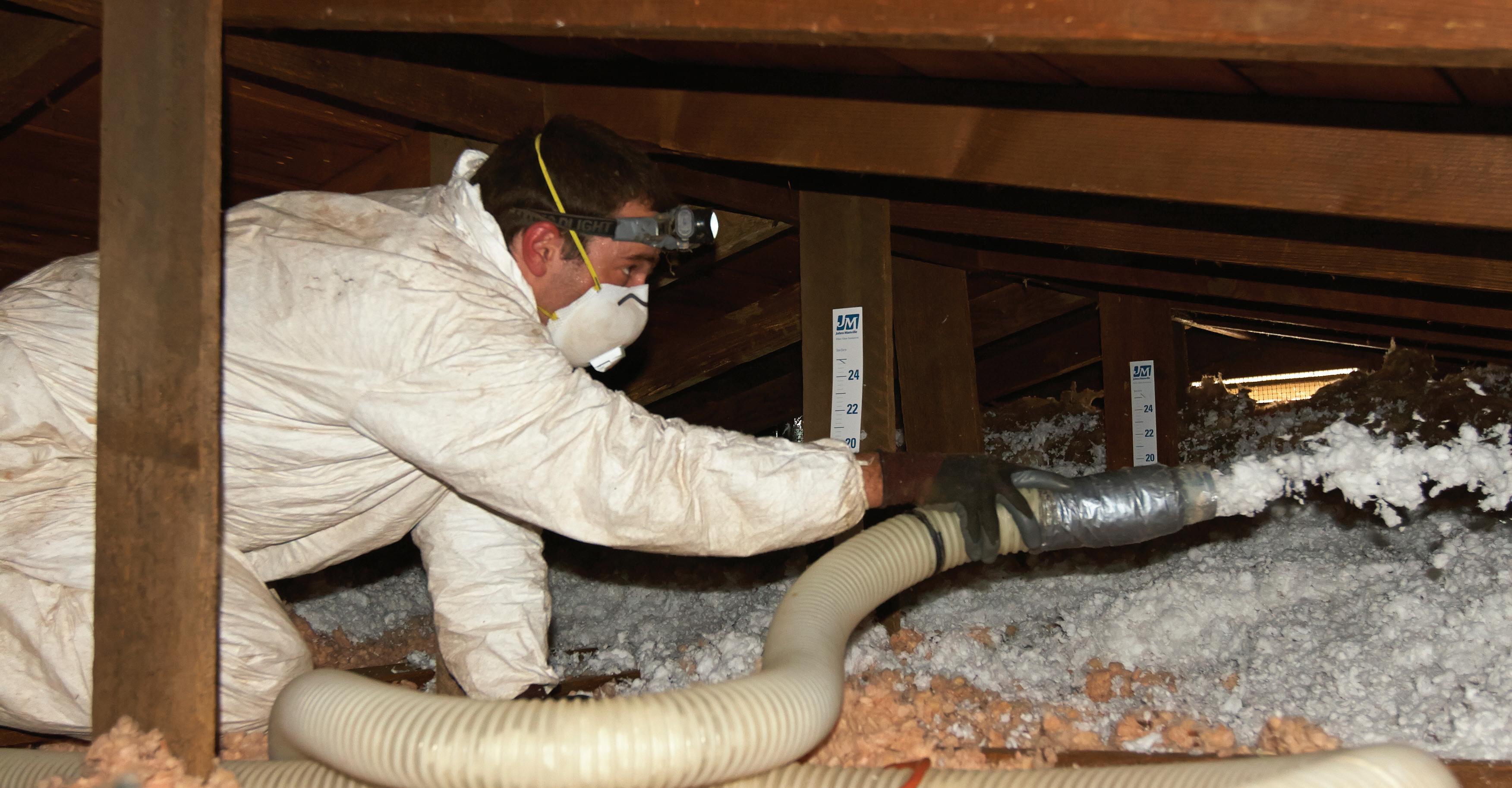
By Miranda Boutelle
Q: How do I improve the efficiency of my old home while keeping its charm?
A: I love old homes. The details and craftsmanship have always drawn me in. The features of older homes can make them less efficient than modern construction, but it doesn’t have to remain that way. You can keep the charm and make your home more efficient.
Start by prioritizing invisible upgrades that make your home more comfortable and efficient. When we were children, I doubt any of us thought, “When I grow up, I want to spend my hard-earned money on insulation.” It’s not as exciting as new countertops or a remodeled bathroom, but air sealing and insulation can save you money every month. You can use those savings for aesthetic improvements.
Many older homes are not adequately insulated. Insulation has several benefits beyond sealing your home and preventing outdoor air from seeping in. It reduces outside noise and improves your comfort. Always properly air seal before you insulate. Older homes with pocket doors, coved ceilings, dumbwaiters, doors to attic spaces and laundry chutes allow indoor air to escape through cavities, gaps and cracks around these classic features.
Sealing these open cavities usually requires plywood, rigid foam or drywall fastened into
place and caulked around edges.
Keep an eye out for framing features that cause drafts. Balloon framing is a type of construction where wall studs run all the way from the foundation to the roof, allowing air to flow freely within those spaces.
Second floors with knee-wall attics on both sides are known for air leakage. Open cavities allow air to flow horizontally between attic spaces, making the home uncomfortable and inefficient. Seal these cavities in the floor framing and insulate attic spaces.
Dense-packed cellulose or closed-cell foam insulation can be sprayed into exterior walls. Skilled contractors can remove pieces of siding and drill holes to fill wall cavities from outside the home.
For brick or stone homes, holes can be drilled from the inside and then patched and painted. Insulating walls from the inside of the home requires more time and effort in preparation and cleanup, but having wellinsulated walls is worth it.
Knob-and-tube wiring—commonly used from the early 1880s to the 1930s—has no grounding wire and should be replaced prior to insulating walls and attics for safety purposes. Contact between insulation and knob-and-tube wiring can cause a fire.
People often think new windows are the best way to improve a home’s efficiency. With the high cost of replacing windows, I recommend investing in air sealing and insulation first. Then consider storm
The first step to improving an old home is air sealing and adding insulation to attic spaces. PHOTO COURTESY OF BONNEVILLE
windows to keep the charm of the original windows, such as leaded or stained glass, as long as they’re in good condition. Choose from interior or exterior options that are operable and inoperable.
Once you’ve addressed the envelope of your home, consider appliance upgrades. Replace old electric water heaters with heat pump water heaters. This upgrade can save a family of four an estimated $550 per year, totaling more than $5,600 over the lifetime of the water heater, according to Energy Star.
Invest in high-efficiency heating and cooling equipment. A mini-split heat pump, also called a ductless heat pump, is more efficient than electric baseboard heating and provides the added benefit of air conditioning.
Old homes don’t have to be inefficient. Show your home some love by investing in energy-efficient upgrades.

Miranda Boutelle has more than 20 years of experience helping people save energy. She has worked on energyefficiency projects from the Midwest to the West Coast.



Hale

Our evening skies this month are rather void of bright planets—a distinct contrast to earlier this year.
At the beginning of July, Mercury can be seen very low in the west during dusk, but it disappears into twilight within the next couple of weeks. Meanwhile, Mars, having faded quite a bit since it was closer to Earth earlier this year, is visible low in the west after dusk. By the end of July, it sets near the end of twilight.
Saturn rises in the east approximately an hour before midnight and is highest above the southern horizon around the beginning of dawn. Saturn is normally viewed as the ringed planet. Earlier this year, the rings were presented edge-on from Earth’s perspective. Right now, they appear as little more than a thin line.
Venus gleams brilliantly in our eastern skies during morning hours this month, as it rises up to an hour before the beginning of dawn. During the latter part of July, Jupiter also begins to make its appearance, rising during the early stages of twilight. One rather interesting morning-sky event takes place July 20, when the crescent moon passes through the Pleaides star cluster in Taurus.
The Perseids, one of the best-known of the “annual” meteor
showers, takes place in August, but this year will be washed out by bright moonlight.
However, late in July, some lesser meteor showers—including one called the Delta Aquarids—may produce up to one to two dozen meteors per hour in our southern sky, partially making up for what we will miss next month.
Since we are still near the peak of the 11-year-long sunspot cycle, it is possible we may continue to see occasional displays of the aurora. There have been a couple of displays visible from northern New Mexico during recent weeks.
Other aurora-related phenomena may appear, including one that was initially and informally called “Steve”—a name borrowed from the 2006 animated movie “Over the Hedge.” Steve typically shows up as a long beam of colored light. Studies from satellite missions a few years ago revealed Steve is caused by charged particles in the atmosphere heated up to high temperatures by the solar wind. Following further research, today Steve is now known as STEVE, an acryonym for Strong Thermal Emission Velocity Enhancement. e

“I never expected it to be so beautiful that it takes your breath away.”
— Kaya C., on Stauer Opals
In a quaint village, nestled between rolling hills, lived a young woman with a deep appreciation for gemstones. Her grandmother gifted her a delicate cross pendant adorned with opals. The opals shimmered with a mesmerizing play of colors, reflecting hues of blues, greens, and fiery oranges. Her grandmother shared the legend of the opals, believed to bring hope, purity, and luck to those who wore them.
Using this story as inspiration, Stauer brings you the Opal Spirit Cross Pendant. With over 2 total carats of Kyocera lab-created opals set in .925 sterling silver encased in yellow gold, this pendant is a radiant celebration of beauty and craftsmanship. Each opal captivates with a kaleidoscopic dance of fiery oranges blending into oceanic blues, streaked with flashes of vibrant green that seem to come alive with every movement. The shimmering opals are skillfully arranged to create an enchanting, otherworldly glow, embodying the spirit of hope and harmony. This breathtaking combination of color and craftsmanship is available as a limited availability of only
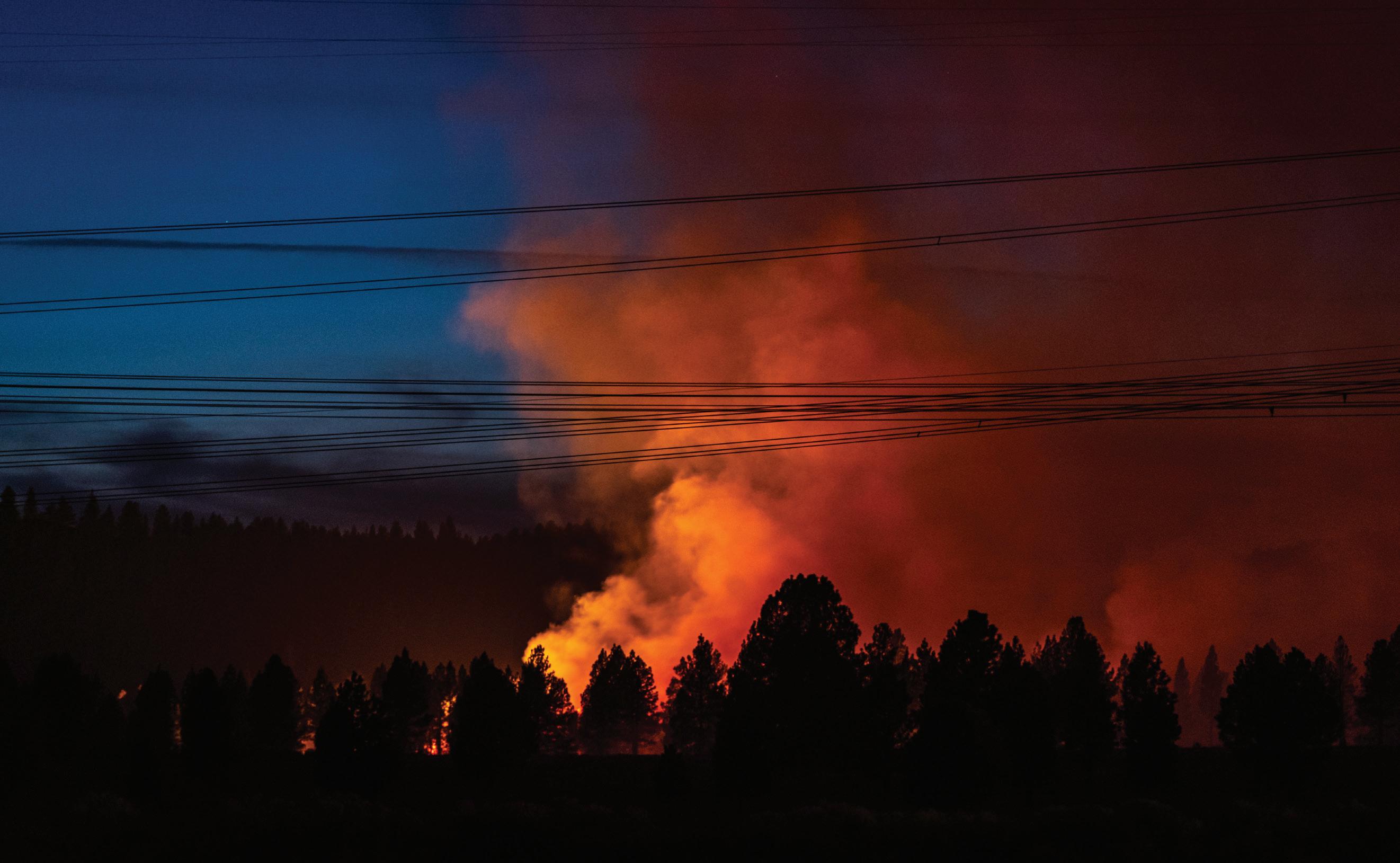
By Scott Flood
Wildfires have always been part of North America’s ecosystems. However, the risks to communities and electric utilities have risen in recent years due to declining forest and public land health, severe weather and increased urban wildland interface. This risk is compounded for electric utilities because dry vegetation ignites easily when it contacts downed power lines or sparks from equipment, and wind creates incidents that start fires and accelerate the spread of flames.
While there’s a common perception wildfires are only a problem out West, recent headlines about wildfires along the Carolina coast, on Long Island and even in the Milwaukee suburbs confirm they’re a potential threat everywhere. When the Forest Service proposed—but subsequently withdrew—a 2024 rule about forest conservation, it cited a study that wildfire risk is growing in the east as fire-resistant species, such as oaks in Eastern forests, are giving way to more combustible species, such as red maples.
In several high-profile cases, investigations cited power infrastructure as the cause of wildfires, making the owners of that infrastructure liable for damage. The Western Fire Chiefs Association reported nearly one-fifth of wildfires from 2016-2020
were triggered by electric power infrastructure. Even if an electric utility isn’t directly responsible for a wildfire, it may find itself compelled to pay for damages under federal strict liability statutes.
“Suppose there’s a shed on a piece of private property, and a strong wind blows the shed into a co-op’s power lines or other infrastructure, causing a fire in a national forest,” says Megan Olmstead, regulatory affairs director for the National Rural Electric Cooperative Association. “Even though the co-op had no control over what the wind did, it may still be on the hook for strict liability and the costs of suppressing the fire and any damage to timber and other natural resources. If you’re operating on Forest Service or Bureau of Land Management lands, you could face between nearly $2 million to upward of $3 million dollars in damages per incident—and that is strict liability alone.”
Given that responsibility, it’s no surprise liability insurance premiums for wildfire damage have increased and coverage is becoming unavailable in some states. Because insurers spread risk across all their

policyholders, even electric utilities facing minimal wildfire risk are seeing higher premiums.
“Our focus is advocating before the federal government to resolve challenges that limit co-op wildfire mitigation efforts, including arduous permitting processes for vegetation management and grid-hardening projects,” Megan says.
At times, it can take several months or even years for federal regulators to approve the removal of a single tree that poses a danger to power lines. Even then, the threat is not removed from the forest or public land.
“In some cases, once co-op crews remove the trees, federal law requires them to leave the timber on the forest floor, which creates more of a fuel load for fires,” Megan says. “Co-ops also face challenges acquiring approvals to simply access their power lines.”
Even basic grid-hardening strategies, such as undergrounding a line or replacing an existing wood pole with a metal one, can trigger a yearslong environmental review process.
Bipartisan legislation moving through Congress would allow electric utilities to step up their mitigation efforts by eliminating delay-causing regulatory roadblocks. The Fix Our Forests Act is designed to expedite federal approvals, making it substantially easier for utilities to harden their grids against wildfires and remove hazardous vegetation that fuels blazes. The act would also limit exposure to frivolous lawsuits that often complicate those efforts. Among its many helpful provisions is permission for utilities to remove vegetation within 150 feet of power lines, rather than the current 10-foot limit.
NRECA’s team is working directly with federal agencies to help utilities develop strategies for limiting liability.
“If your co-op creates a forest operating agreement with the U.S. Forest Service, they’ll cap your strict liability amount per incident,” Megan says. “We’re working to promote similar concepts across the other federal land management agencies.”
As the risk of wildfire grows, more utilities are developing wildfire mitigation plans.
“Plans spell out the mitigation process co-ops employ to reduce risks to their systems, including vegetation management and grid hardening projects,” she says. “Many co-ops also are increasingly navigating the complex decision-making process related to whether Public Safety Power Shutoffs are necessary or helpful in their systems, then determining how that process will work during severe weather.”
Researchers and electric utilities are investigating new technologies for detection of and response to wildfires, but for now, wildfire mitigation planning is crucial. The process is most effective when it involves a collaborative approach with all stakeholders.
“It’s important to engage with land management agencies, state and local government, local businesses and the agricultural community to discuss the risks and how everyone should respond if a fire occurs,” Megan says. “By working together, they can focus on key factors, such as community hardening and minimizing damage.” e
By Bonneville Power Administration Staff
New fire-resistant wrap—an initiative launched by Bonneville Power Administration in 2024—saved the day during a wildland fire this past summer, reducing damage to transmission wood poles and protecting critical infrastructure.
As the largest transmission provider in the Northwest, BPA manages more than 15,000 miles of high-voltage transmission lines. Fire season is often the most challenging time of the year as field crews, system operators and many others across the agency diligently work to mitigate wildfires and maintain reliable operations.
When a wood transmission pole is damaged by fire, line crews must respond promptly. Depending on the severity and location of the fire, a damaged section of line could be out of service for a few hours to several weeks.
Using a fire-resistant wrap at the base of the wood pole reduces the likelihood that the pole will be damaged to the point where it needs to be replaced. This saves time, resources and improves safety and reliability.
The new fire wraps are made of a fiberglass mesh with an intumescent coating that expands and seals around the pole during a fire, creating a protective barrier and effective heat insulation. Within 20 seconds of coming in contact with wildfire, the wraps activate to prevent burning, strength loss and pole failure. Wraps can withstand flames with temperatures up to 2,100 degrees.
The fire wrap proved effective during the WacoaSwawilla Fire in July 2024, when a weekslong blaze on the Colville Reservation in Northeast Washington burned 53,462 acres. Despite intense conditions, none of BPA’s wood poles required replacement. Power in the nearby town of Keller remained on.
Wildfires have intensified in recent years. The National Interagency Fire Center reports wildfire activity is occuring earlier in the spring, lasting longer throughout each year and becoming more extreme and complex to manage.
As wildfires increase in severity, utilities are forced to adapt to this new reality.
Fireproofing the grid now extends beyond traditional vegetation management to include undergrounding power lines, replacing wood poles with fire-resistant steel or fiberglass structures, or insulating bare overhead lines. These approaches, while often complex and resource intensive, have proven effective in reducing wildfire risk and maintaining reliable power.
The New Mexico Rural Electric Cooperative Association’s 2025 Annual Meeting brought together leaders from around the state to share ideas and help forge a bright future
By Tom Condit
More than 300 attendees from New Mexico’s 15 electric cooperatives gathered May 13–15 at Isleta Resort & Casino for NMRECA’s 81st Annual Meeting. The event opened with remarks from Socorro Electric CEO Manny Gonzales and included briefings from state leaders, agency representatives, and cooperative partners on topics ranging from wildfire mitigation and broadband expansion to grid reliability and legislative developments.
Presentations featured updates from Tri-State G&T, the Public Regulation Commission, the Energy, Minerals and Natural Resources Department, and the New Mexico Environment Department. A dedicated grant panel spotlighted wildfire planning efforts by Mora-San Miguel Electric Cooperative, while a breakout session with Tri-State Generation & Transmission, the Bureau of Land Management and NM Forestry focused on mitigation strategies and interagency coordination.
The meeting honored cooperative leadership with Co-op Champion Awards presented to Senator Pat Woods (in absentia), George Biel and the late Keven J. Groenewold (accepted by Jeff Groenewold). Safety excellence was recognized with the Carl M. Turner Safety Award, presented to Central Valley Electric Cooperative, Farmers’ Electric Cooperative, Northern Rio Arriba Electric Cooperative, and


Tri-State G&T. The Long Rope Safety Award was presented to Daniel Utajara, journeyman lineworker at Lea County Electric Cooperative.
Special recognitions followed from Federated Insurance and CFC, along with remarks from Youth Leadership Council representative Hailey Bidegain. The final morning included updates from Western Farmers Electric Cooperative, CoBank, New Mexico State University, Nexstar Media and Pioneer Utility Resources. The meeting
concluded with door prize drawings and a renewed sense of momentum for the year ahead.
Thank you to our member co-ops, G&T partners, speakers, Business Alliance sponsors, vendors, associate partners and all who help keep rural New Mexico powered, prepared and connected.
Follow NMRECA on Facebook to see more pictures and videos highlighting our 2025 Annual Meeting.

Membership and guests listen to insightful presentations held throughout NMRECA’s annual meeting.









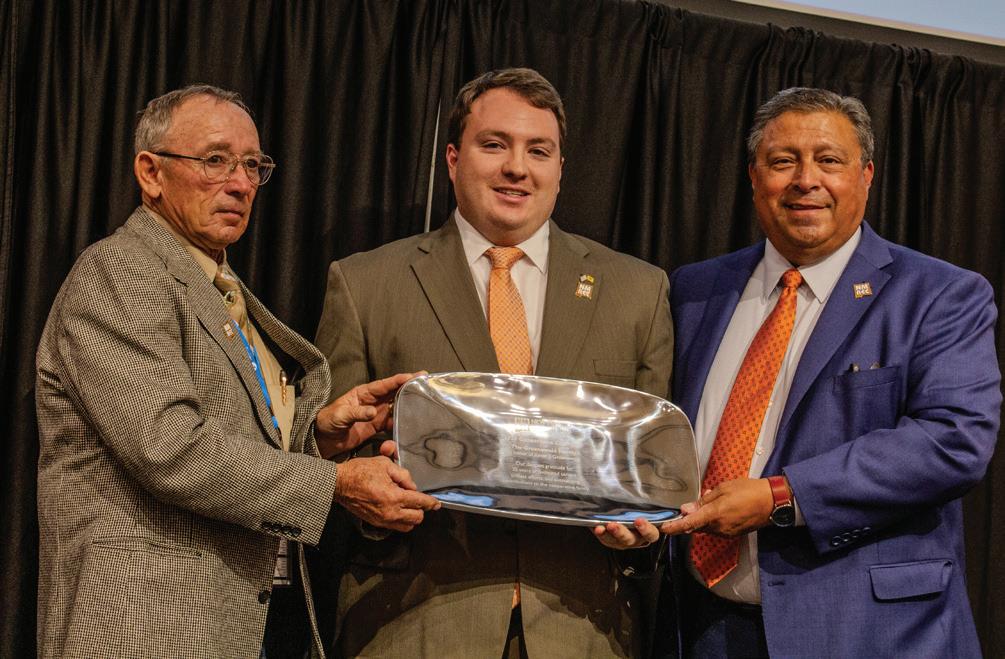



Former NMRECA CEO Keven J. Groenewold, accepted posthumously by his son, Jeff Groenewold.

George Biel, who served nearly 40 years on the Sierra Electric Cooperative and NMRECA boards.
Also Awarded: Sen. Pat Woods.



Carl M. Turner Safety Award
From left: Tri-State G&T Northern Rio Arriba Electric Cooperative Farmers’ Electric Cooperative Central Valley Electric Cooperative
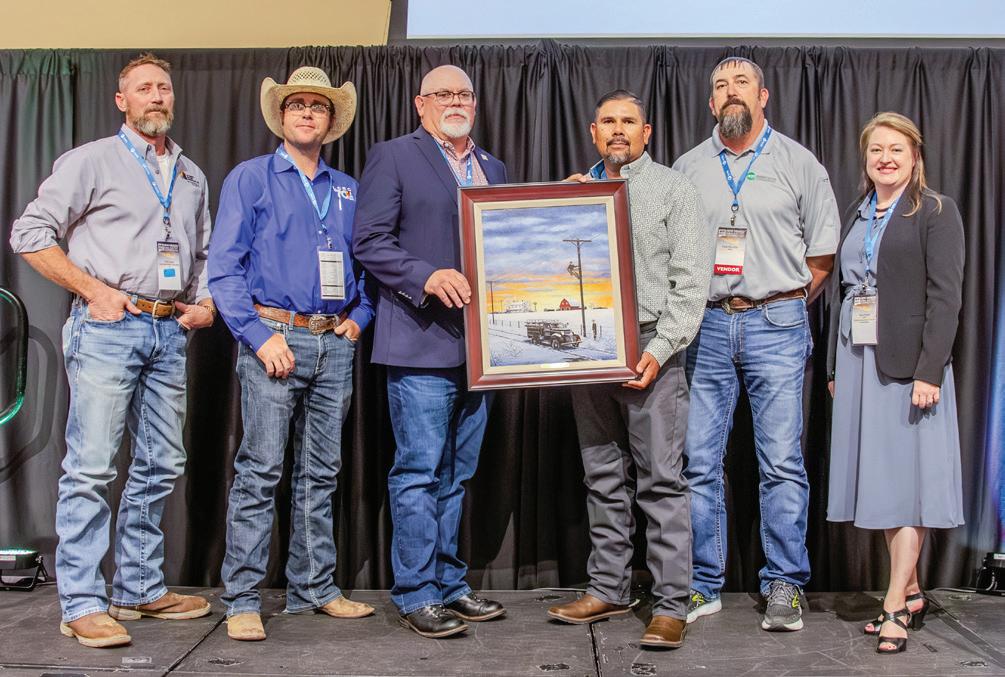

Daniel Utajara, third from right, journeyman lineworker at Lea County Electric Cooperative
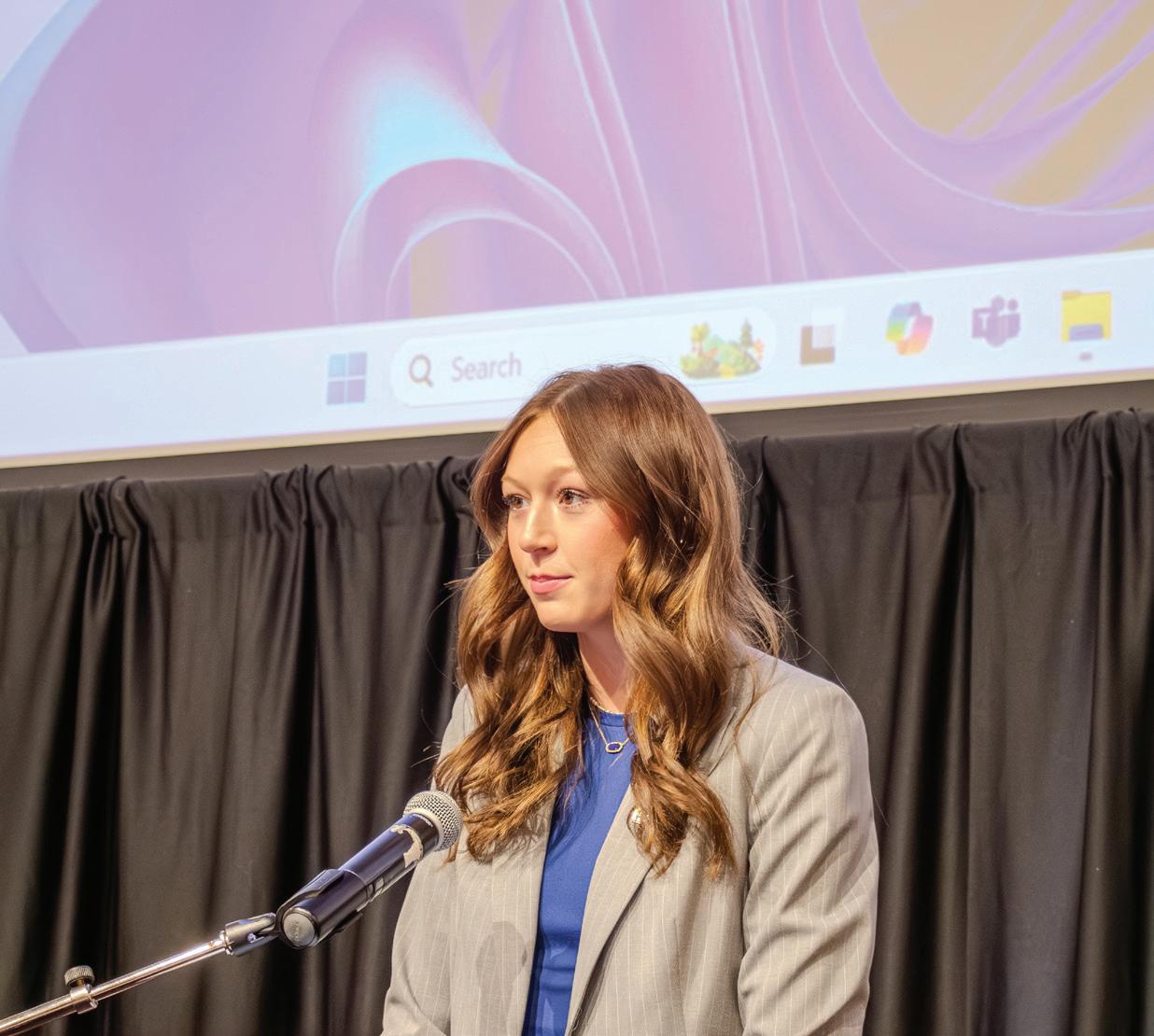
By Sable Riley

The preamble to the Declaration of Independence, adopted by the Continental Congress on July 4, 1776, announced a brand-new nation’s belief that every individual has the right to life, liberty and the pursuit of happiness.
Thanks to the services provided by utilities across the country, Americans have the freedom to make their homes wherever their hearts desire without sacrificing modern conveniences and the latest innovations.
Being free to chase your dreams is a lot easier when you can do it with the peace of mind that comes with knowing you’ve taken precautions to protect your home and community from electrical hazards, outages and accidents.
Being proactive about electrical safety in your home safeguards the well-being of your family and property, and reduces the likelihood you need to call for emergency services or other external help during an unexpected crisis.
Consider, for instance, the value of installing generator transfer switches. When severe weather knocks out power lines, these devices enable homeowners to safely switch from grid electricity to their generators without the risk of back-feeding electricity onto electric lines—a dangerous situation for lineworkers.
Another important precaution is properly grounding electrical systems. Proper grounding prevents shocks and fires by safely directing electricity away from your home in case of a fault. It’s a practical investment that protects your family and property.
Modern surge protectors and advanced circuit breakers provide crucial protection from unexpected electrical surges. These tools safeguard electronics and appliances, keeping your household running smoothly during summer storms or unexpected electrical events.
Taking these practical measures ensures you’re prepared for any electrical safety challenge that might arise.
This Independence Day, as fireworks light up our skies and we gather with friends and family, let’s also take a moment to focus on safety. Being truly independent means being able to manage and overcome whatever challenges come your way.


— Gene H.

Switzerland is synonymous with expensive, big-name luxury watches like Rolex®, Piaget® and Patek Philippe® that sell for thousands, but the Stauer Swiss Tactical Watch delivers Swiss precision for a fraction of the cost. Inspired by military timepieces like the American A-11, it combines rugged performance, simplicity, and legendary craftsmanship — built for action, not display cases.
Precision Takes Time
Swiss excellence demands patience. Each Stauer Swiss Tactical takes nearly nine months to complete, and this is a limited edition of 4,900. Crafted by master watchmakers, some of whom have worked with the other prestigious brands, this is your chance to own a rare, precision-engineered tactical watch without the inflated luxury price tag.
Why Pay for a Name?
Big brands charge more for status. Stauer delivers the same quality and precision with high-contrast markers for instant readability, a shock-resistant case to withstand hard knocks and Swiss-made movement for impeccable timing.
Limited Offer – Act Now
Don’t miss this rare combination of Swiss craftsmanship and unbeatable value. Only 4,900 available — once they’re gone, they’re gone.
Why pay more when you can own precision, heritage, and adventure for less? Order now — time is running out.
Watch Specifications:
• Made in Switzerland with precision Swiss Ronda 515 movement. Stainless steel caseback. Brown leather band
• 44 mm diameter case. Date window at 3 o’clock
• Water-resistant to 3 ATM. Fits wrists up to 8 ¼"
Stauer Swiss Tactical Watch
$399 $59* + S & P Save $340
*Special price only for customers using the offer code.
In July, not only does America celebrate its freedom, but a number of Greek feast days take place to honor Greek saints such as saints Marina, Elias, Anna, Paraskevil and Panteleimon.
Feast days are named “paniyria” and are robust, outdoor celebrations that include music, dancing and a variety of national foods. This month, enjoy Greek fried rice, which provides a delicious, spiced blend as well as a healthy dose of good-for-you protein with Greek yogurt. Don’t let the long list of ingredients be daunting; just enjoy the delightful, finished product.
Dessert, anyone? If you mention you’re bringing a dip to the party, most people will think of savory recipes. Change it up with a peanutty creamy dessert dip. This formula is sweet and contains generous flavors that blend harmoniously. The saltiness of pretzel rods creates a coveted sweet-salty combination that is sure to please. Your family and friends will leave no leftovers.
8 ounces cream cheese, softened
¾ cup crunchy peanut butter
1½ cups powdered sugar
1 teaspoon vanilla extract
8 ounces prepared whipped topping
½ cup pecans, chopped
1 cup mini chocolate chips
Chocolate fudge sauce to garnish Pretzel rods
• Mix together cream cheese and peanut butter until well blended. Mix in powdered sugar and vanilla extract.
• Fold in the whipped topping, pecans and chocolate chips until completely blended.
• Spoon dip into a serving bowl, and chill for 30 minutes in refrigerator.
• Prior to serving, drizzle chocolate fudge sauce over top. With a butter knife, swirl the mixture to create a marbled effect. Line the sides of the serving bowl with pretzel rods. Serve cooled with additional pretzel rods on the side.


3 tablespoons butter
2 cloves garlic, chopped
½ onion, chopped
1 teaspoon chicken bouillon
2 teaspoons dried basil leaves
1 tablespoon dried oregano leaves
2 teaspoons dill weed
½ teaspoon ground thyme
½ cup colorful sweet mini peppers, seeded and diced
1 cup carrots, peeled and diced
1 cup broccoli florets, diced
2 eggs
2/3 cup plain Greek yogurt
1 cup feta cheese, crumbled
4 cups cooked brown rice
Fresh mint to garnish
• In a large skillet, melt butter and cook garlic and onion until translucent.
• Add chicken bouillon, basil, oregano, dill and thyme and stir until incorporated. Stir in the remainder of the finely chopped vegetables and cook until softened.
• Crack eggs into the skillet and cook into vegetables, stirring often. Stir in yogurt and ¾ cup feta cheese, warming until incorporated.
• Fold in cooked rice, then transfer to a serving dish.
• Garnish with remaining feta cheese and fresh mint leaves. Serve warm.
Makes 8-10 servings.

CROSS M COMPOSITE CALVES FOR SALE. Best of breed genetics designed to reduce mature weight for increased soundness, performance, productivity and longevity in your herd. 1/4 Angus, 1/4 Dexter, 1/4 Longhorn, 1/4 Highlander, San Acacia, NM. Rebecca Moeller, 575-835-3866 or Greg Schulte, 720-400-9452.
TTILE SHOWERS BUILT ESPECIALLY FOR YOU! Call 931-201-2791. Ask for FREE Estimate!Great Prices, Beautiful Showers! *In business since the late 1900s* Any shower, anywhere. Call Ed 931-201-2791.
PORTABLE TOILETS & SEPTIC PUMPING SERVICE FOR SALE IN SOCORRO COUNTY, NM. Well established business since 2012. Septic truck, 2-pumping units, toilets, and handwash stations. Owner wanting to retire. 575-418-0190.
IRRIGATION PIPE FOR SALE. Make irrigating faster and more efficient. PVC and aluminum pipe and fittings like T’s, elbows, plugs, hydrants, alfalfa valves, butterfly valves. Half the price of new and ready to use. Call Sierra (575) 770-8441.
WANTING TO BUY 6’ OR 8’ USED WINDMILL FAN AND TAIL. Also, need motor. Call 505-469-4169.
BUYING OLD GAS PUMPS, PUMP PARTS, OIL CANS, GLOBES, ADVERTISING SIGNS THERMOMETERS CLOCKS, OLD LICENSE PLATES, OLD NEON SIGNS. Call the Gas Guy in Embudo 505-852-2995. Have TruckWill Travel.
HEADSTONES (I.E. CEMETERY MONUMENTS) is our business. Over 1,000 designs. An eternal memory of a loved one. TAOS MOUNTAIN HERITAGE. Call 575770-2507 or 575-758-3903 or Email: taos_mt_ heritage@msn.com. Alfalfa Bales for sale also. Website: www.taosmountainheritage.com
FOR SALE: 2007 CAMPER FLEETWOOD PIONEER BUMPER PULL 22 FT. $8,000. Call 575-416-3284.
CLOVIS-409 HUMPHREY ROAD, VACANT LAND WITH COMMERCIAL POTENTIAL. 8.5 acres not far from US 60-84. Big Mesa Realty, 575-456-2000, Paul Stout, Broker 17843, 575-760-5461. www.bigmesarealty.com.
TUCUMCARI-1120 S SARATOGA, (Also next to US 54/Mountain Road) $20,000. City water close by. Big Mesa Realty, 575-4562000, Paul Stout, Broker 17843, 575-760-5461. www.bigmesarealty.com.
CONCHAS- 195 HIDDEN PLACE, SEPTIC, POWER POLE AND WATER LINES. Just over 1 acre. $50,000. Big Mesa Realty, 575456-2000, Paul Stout, Broker 17843, 575-7605461. www.bigmesarealty.com.
CANADIAN RIVER-WEST UTE LAKE- Six 40 acre +/- parcels. Lake and Mesalands view. Call for showing and pricing. Owner Financing Available. Big Mesa Realty, 575456-2000, Paul Stout, Broker 17843, 575-7605461. www.bigmesarealty.com.
FORT SUMNER-SUMNER LAKE- 225 Indian Place, Two bedroom, two bathroom home on 20 acres with loft space. Amazing views of the Pecos River valley. $325,000. Big Mesa Realty, 575-456-2000, Paul Stout, Broker 17843, 575-760-5461. www.bigmesarealty.com.
MILAGRO- 0000 PECOS SPUR, PORTILLO CREEK RANCH SUBDIVISION. Tract 6, 164 acres. Partial fencing. Wide open space. $84,000. Big Mesa Realty, 575-456-2000, Paul Stout, Broker 17843, 575-760-5461. www.bigmesarealty.com.
MAGDALENA-0000 TBD STATE ROAD 169, 1.28 ACRES. Great mountain views 15 miles from Magdalena. Borders Cibola National Forest. Hunting potential. $15,000. Big Mesa Realty, 575-456-2000, Paul Stout, Broker 17843, 575-760-5461. www.bigmesarealty.com.
DATIL/PIE TOWN- VARIOUS 40 +/ACRE TRACTS NORTH OF SAWTOOTH MOUNTAINS AND NATIONAL FOREST IN FORMER CRISWELL RANCH AREA. Call for pricing. Big Mesa Realty, 575-456-2000, Paul Stout, Broker 17843, 575-760-5461. www.bigmesarealty.com.
SOCORRO, SAN MARCIAL-SOUTH OF SAN ANTONIO-WILLOW SPRINGS SUBDIVISION- 702 acres with southwestern style home. Great views in the Chupadera Mountain foothills. $1,100,000. Big Mesa Realty, 575-456-2000, Paul Stout, Broker 17843, 575-760-5461. www.bigmesarealty.com.
EASTERN NEW MEXICO- LET US SELL YOUR LARGE ACREAGE WORKING FARM OR RANCH. Broker is farm owner/operator and lifetime New Mexico resident. Big Mesa Realty, 575-456-2000, Paul Stout, Broker 17843, 575-760-5461. www.bigmesarealty.com.
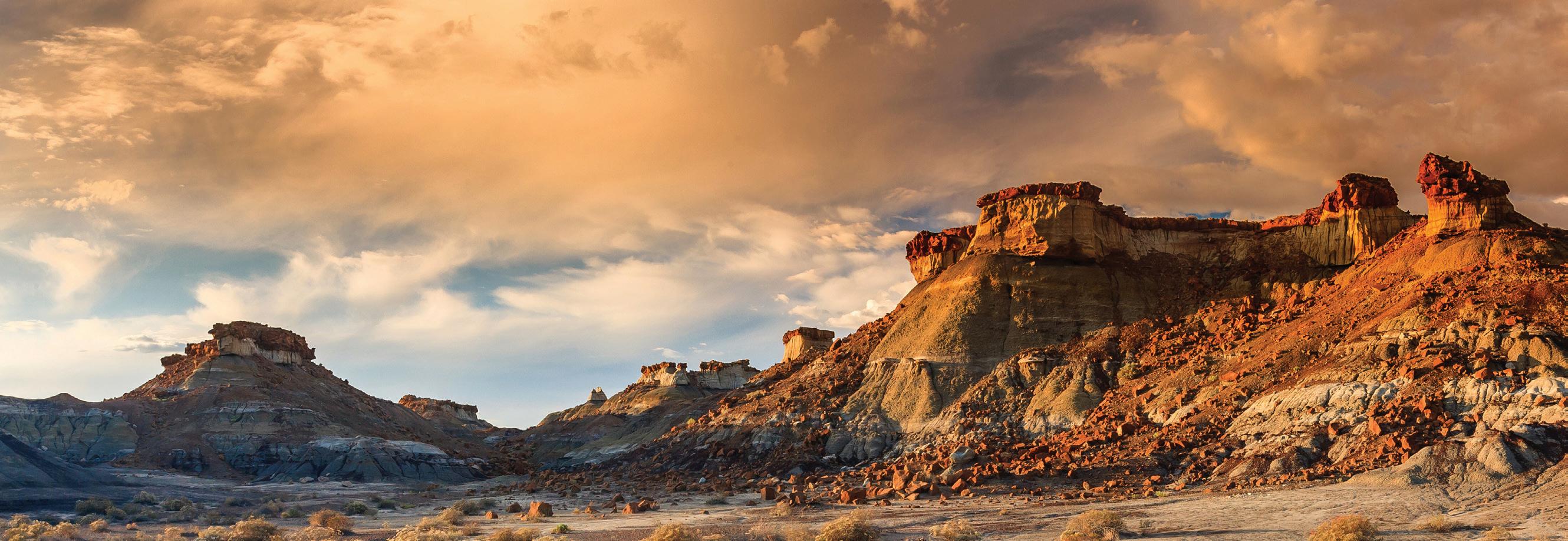
OKLAHOMA PANHANDLE- LET US SELL YOUR LARGE ACREAGE WORKING FARM OR RANCH. BROKER IS FARM OWNER/ OPERATOR. Big Mesa Realty, 575-456-2000, Paul Stout, Broker 17843, OREC Broker 209965 575-760-5461. www.bigmesarealty.com.
80 GLORIOUS HILLY ACRES 3 MILES SOUTH OF MADRID OFF THE TURQUOISE TRAIL. The views of the surrounding hills & valley are stupendous. Plenty of building sites, & a good dirt road to the top of the lower 40 acres, but no graded road beyond that. The shipping container on a large level spot on the lower 40 acres would be a great place to build. No utilities in place, & no electric in the area. Laurie Frantz, Real Broker LLC, 505-920-1346, lauriefrantz@gmail.com.
FANTASTIC OPPORTUNITY TO OWN A PIECE OF HISTORIC NORTHERN NEW MEXICO, IN HISTORIC TIERRA AMARILLA. This two-story traditional style adobe home with tin roof was built in 1881 and is known as the Garcia House. The original interior adobe walls and wood floors are still in most of the house. The property is zoned both commercial and residential. The current owners have a room in the back which was used as a stage. Laurie Frantz, Real Broker LLC, 505-920-1346, lauriefrantz@gmail.com.
1. Visit www.enchantment.coop/classifieds and complete form. You will be contacted by email with price and deadline to submit check or money order.
2. Ads will not be accepted over the phone.
3. Or, complete form and select category.
4. Write ad on another sheet of paper.
5. Price: 40 word ads are $50 80 word ads are $100
To Send and Pay Your Classified Ad
1. Mail ad and payment (Payable to NMRECA)
NMRECA • enchantment 614 Don Gaspar Ave. Santa Fe, NM 87505
40 BEAUTIFUL, FORESTED LOTS IN THE PENDARIES SUBDIVISION, FEATURING PONDEROSA PINES. Each lot is available for purchase individually, with prices as low as $5,000. Community water access and views. Don’t miss this opportunity—secure your ideal lot today! Laurie Frantz, Real Broker LLC, 505920-1346, lauriefrantz@gmail.com
2 CONTIGUOUS PINON/JUNIPER-forested lots, 45.563 acres, Mujeres Ranch, Cibola Co. Electricity at lot line; well, septic needed. No HOA or covenants; MHs allowed. Owner financing possible. $99,500 for both. Big mountain views! Laurie Frantz, Real Broker LLC, 505-920-1346, lauriefrantz@gmail.com
PRIME BUSINESS LOCATION ON HISTORIC BRIDGE STREET JUST STEPS FROM LAS VEGAS’ HISTORIC PLAZA. Surrounded by beautiful historic commercial establishments, this building is an infill built in 1988 in the style of its neighbors. Downstairs retail; upstairs residential or 3 separate offices w/kitchen, dining area, & full bath with laundry. New roof 2004; central heat & air; security system; parking in back & on-street. Laurie Frantz, Real Broker, 505-920-1346, lauriefrantz@gmail.com.
FOR SALE: LAKE SUMNER, FT SUMNER, NM HOME, 2 LOTS ON PEACH LANE, 2B1B fully furnished, open concept with (2nd lot) detached 2 car garage with 1B1B attached, water well, trailer, furniture and paddle boat included. For sale as is; $125,000 contact owner; Amy Muffley at 432-556-9946 and dance. amy214@gmail.com.
2010 HONDA RANCHER ATV 4X4, manual shift, green,1100 hours, 200 hours on tires & battery. Excellent condition. $3,500.00. Wagon Mound, NM Call 575-666-2145.
Deadline
1. Due the 7th, one month prior. Ex: Ads due July 7 for the August issue.
Good to Know
1. Only members of New Mexico electric cooperatives may place ads.
2. We reserve the right to reject any ad.
4. Advertisements in enchantment are paid solicitations and are not endorsed by the publisher or the electric cooperatives of New Mexico.
5. PRODUCT SATISFACTION AND DELIVERY RESPONSIBILITY LIE SOLELY WITH THE ADVERTISER.
6. Enchantment prints monthly, except for June and December. Questions? Call: 505-982-4671.
Name: Address: City: State: ZIP: Phone:
Cooperative: Select Category Below
Animals Great Finds
Business Real Estate
Equipment Vehicles


New Mexico’s rural communities, served by electric cooperatives across the state, are surrounded by breathtaking deserts, mountain ranges, and more than 50 national and state parks. From quiet villages to historic cities such as Santa Fe and Taos, the Land of Enchantment blends Native American, Mexican and Spanish cultures into something truly unique. Here are upcoming local events happening in the co-op areas and beyond:
Los Alamos Summer Concert Series
When: Every Friday until Sept. 5
Where: Ashley Pond Park, Los Alamos
Come hear free live music every Friday evening featuring a mix of local and national acts in a family-friendly setting. santafe.com/los-alamos-summer-concert-series
Flying J Ranch Western Show
When: Nightly shows throughout July
Where: 1028 Highway 48 North, Alto
Experience the Old West with chuckwagon dinners, cowboy music and gunfight reenactments. flyingjranch.com/attractions
Santa Fe Chamber Music Festival
When: July 11-Aug. 18
Where: Santa Fe
The music festival is a six-week celebration of chamber music featuring renowned artists and emerging talents. Performances are held at venues including the Lensic Performing Arts Center and St. Francis Auditorium. santafechambermusic.com
Taos Pueblo Pow Wow
When: July 11-13
Where: Taos Pueblo
At this three-day event, members of Indian tribes throughout the country gather to compete in traditional dances. taos.org/events/annual-events
Bikers vs. Bulls
When: July 18-19
Where: 121 S. Third St., Grants
This bikers rodeo features a variety of events. Call 505-290-0481 for info. nmalr.org/event/bikers-v-bulls
29th Annual Weed NM Bluegrass Festival
When: July 19-20
Where: Weed Community Center
Listen to bluegrass bands at the Weed’s Community Center. This longtime tradition is the annual community fundraiser to keep the Community Center open. Saturday is $15 per person or $30 for immediate family. Sunday is free with a devotional at 9 a.m. and gospel bluegrass music until noon. weednm.org/bluegrass-festival.html
Corona Days
When: July 25-27
Where: Corona
Visit Corona for a fun-filled, family-friendly weekend of activities, such as a children’s playdate/rodeo, ranch rodeo, parade, bingo, vendors, horseshoe and cornhole tournaments. For a complete list of times and event, see the Corona Days 2025 Facebook page. Interested vendors can call 575-799-6156 for more information. villageofcorona.com
Ruidoso Art & Wine Festival
When: July 25-27
Where: Ruidoso
This annual event showcases fine art and wine, attracting artists and enthusiasts from across the region. discoverruidoso.com/calendar-of-events/ ruidoso-art-and-wine-festival
Las Fiestas de Taos
When: July 25-27
Where: Taos Plaza, Taos
Enjoy music, food, parades, markets and dance honoring Spanish culture at the annual event. taos.org/events/annual-events
Santa Fe Indian Market
When: Aug. 16-17
Where: Santa Fe Plaza, Santa Fe
As the largest juried Native American art show in the world, this market features works from more than 1,000 Indigenous artists. swaia.org/santa-fe-indian-market
Bubonicon 2025
When: Aug. 22-24
Where: Albuquerque Marriott, Albuquerque
The annual multigenre convention focuses on science fiction and fantasy, featuring panels, workshops and guest authors. bubonicon.com
White Oaks Miners Day
When: Aug. 23
Where: White Oaks
Explore the history and pay tribute to the gold miners who made White Oaks a booming town in the 1800s. There will be a parade, food trucks, craft vendors, children’s games, music and more throughout the day. tinyurl.com/yc4rza37
Hatch Chile Festival Carnival
When: Aug. 29-Sept. 1
Where: Hatch
Celebrate the chile harvest with local vendors, chile roasting and family-friendly activities in the “chile capital of the world.” hatchchilefestival.org
Send your event details to eventcalendar@nmelectric.coop. Include the event title, date, town and a summary of the event. Include the event website address so readers can get additional event information. Submit the event notification at least 60 days before the event to meet our press deadline. Space is limited, and events are run at the discretion of the editor.
Outdoor water activities and electricity never mix because water is a powerful conductor of electricity. When electrical devices or cords come into contact with water— like at a pool, lake or beach—it can cause serious electric shocks. Keep all electrical items far away from water and always follow safety rules when you’re outside near water.
Read the sentences below, then unscramble the bolded letters to complete the safety tips.
1. Never touch electrical csevied, switches or plugs when your hands are wet.
2. Always place lacertceil items, like radios, speakers or lights, at least 10 feet away from the water’s edge.

3. After using outdoor electronics, ngulup them and store them away from water to prevent accidents.
4. Keep extension dsroc far away from water sources to prevent tripping hazards.
5. Always pay attention to “no wmsinimg” signs, whether at the pool, beach or lake.



By Sable Riley and Michael Leitman
America’s appetite for energy never takes a break—and neither can the power grid. That reliability stems from a diverse energy mix. Across the country, electric utilities depend on coal, natural gas, nuclear, wind, solar, hydropower, biomass—from organic waste like wood chips—and geothermal sources to keep the power flowing.
Energy Mix by the Numbers
According to the U.S. Energy Information
Administration, natural gas is the leading source of energy, generating about 43% of the United States’ electricity in 2023, the most recent statistics available.
Coal, once dominant, has fallen to about 16%. Nuclear produces roughly 18%, delivering reliable baseload power. Renewables continue to grow. Wind contributes about 10%, hydroelectric dams about 6%, solar farms 4%, and biomass and geothermal together account for 1-2%.
Altogether, renewables make up just more than 20% of the mix. This balance—60% fossil fuels, 20% nuclear and 20% renewables— leverages the strengths of each resource.
Electric utilities embrace an
all-of-the-above strategy. Jim Matheson, CEO of the National Rural Electric Cooperative Association, says diversity of electric generation, including baseload sources, is essential to providing dependable, affordable power.
Utilities use what’s local and available— hydro in the Northwest and solar in the Southwest—and exchange power regionally to stay flexible.
Some sources can be turned on when needed; others can’t. Dispatchable sources like natural gas, coal and hydropower—if
Energy choices—and the sheer volume of power produced— swing wildly once you break the country into the four Census Bureau regions. This map shows each region’s 2023 electricity output, then stacks the fuel mix so you can see who leans on gas, who burns coal, and where wind, solar and hydropower dominate from coast to coast.
• Natural Gas: 25%
• Coal: 32%
• Nuclear: 12%
- Wind: 24%
- Solar: 3%
- Hydropower: 3%
• Renewables: 31%

NOTE: Percentages are approximate shares based on the most recent data available from the U.S. Energy Information Administration utility-scale net generation. *Other renewables combine biomass and geothermal fuel data.
• Natural Gas: 30%
• Coal: 10%
• Nuclear: 4%
• Renewables: 56%
- Wind: 14%
- Solar: 18%
- Hydropower: 22%
- Other: 2%
• Petroleum: 1%
- Other: 1%
Northeast (524 TWh)
• Natural Gas: 47%
• Coal: 5%
• Nuclear: 29%
• Renewables: 18%
- Wind: 5%
- Solar: 4%
- Hydropower: 8%
- Other: 1%
• Petroleum: <1%
South (1,934 TWh)
• Natural Gas: 45%
• Coal: 18%
• Nuclear: 17%
• Renewables: 19%
- Wind: 9%
- Solar: 6%
- Hydropower: 3%
- Other: 1%
• Petroleum: 1%


those resources are available—ramp up and down on command, responding instantly to demand changes. In contrast, nondispatchable sources like wind and solar depend on weather. A reliable grid needs both types working in concert. On a sunny afternoon, solar farms may flood California’s grid with power. At sunset, fast-start gas and hydroelectric plants take over.
“The growth of renewables has had many benefits, but the wind doesn’t always blow, and the sun doesn’t always shine,” Southwest Power Pool’s Paul Suskie said in a 2023 congressional testimony on grid security.
Grid operators must rely on other fuel sources to ensure demand can still be met, Paul said. Real-world events underscore this interplay.
During California’s 2022 heat wave, battery storage systems and gas plants met peak evening demand after solar generation declined. Conversely, Winter Storm Elliott in December 2022 caused blackouts in parts of the Southeast when more than 100,000 megawatts of coal and gas capacity failed during freezing conditions. That crisis revealed the risk of over-reliance on a single resource.
Electricity demand is also skyrocketing, fueled by new data centers and a surge in domestic manufacturing.
According to the North American Electric Reliability Corp., electric demand growth is now the highest it has been in more than two decades. Over the next 10 years, peak power
needs are expected to rise by more than 18%, with new projects driving demand even higher. That puts grid reliability under the microscope.
Regulators at the Federal Energy Regulatory Commission and at the state level are adjusting policies to support capacity, storage and demand response. In 2024, FERC Commissioner Mark Christie warned the United States is heading for a catastrophic situation in terms of reliability if changes aren’t made carefully during testimony before the House Subcommittee on Energy, Climate, and Grid Security.
The nation’s energy mix is shifting, driven by economics, innovation and policy choices. Federal incentives from the 2022 Inflation Reduction Act accelerated investments in solar, wind, batteries and advanced nuclear. At the same time, environmental regulations are prompting closures of older coal and gas plants.
NERC’s 2024 assessment cautions that rising demand combined with shrinking
LEFT: Renewable energy sources like solar and wind provide many benefits and can deliver lowcost electricity, but they only generate electricity when the
or
baseload capacity puts many regions at risk of shortfalls during extreme conditions— even after recent solar and storage additions.
Energy storage is a promising development. Batteries help balance intermittent renewables by storing surplus energy and releasing it when needed. Battery capacity in the United States jumped 66% in 2024 to roughly 26 gigawatts and could nearly double again by the end of 2025, according to the U.S. Energy Information Administration.
No single energy source can guarantee affordable, uninterrupted electricity across a country as vast and weather-diverse as the United States. Natural gas is flexible but susceptible to supply disruptions. Coal and nuclear plants offer consistent output but are less adaptable and aging. Wind and solar, while clean, depend on weather, and storage solutions remain limited.
Having a range of energy resources safeguards against any one fuel becoming scarce, expensive or unexpectedly unavailable. That’s why electric utilities continue to invest in a balanced portfolio of energy sources—diversity gives the grid the resilience it needs to meet demand in the moments that matter most.

Energy use often rises with the summer heat, but there are a number of simple, economical ways to boost comfort, save energy and reduce electric bills. Most of these energy-saving steps can pay for themselves relatively quickly. For example, weather stripping and caulking are inexpensive ways to boost efficiency and cut energy costs year-round.
A substantial portion of total residential energy costs is spent cooling homes. Reduce energy costs and ready the air conditioner with a cleaning and tuneup. Clean or change filters monthly during the cooling season. If you’re purchasing a new unit, check the efficiency rating, which
could impact your annual energy costs. For greater operating efficiency, install the unit in a shady area, and keep it free from plant overgrowth and debris.
Summer sunlight and heat enter homes through windows. Closing curtains, blinds and shades can reduce heat gain by up to 40%. Installing awnings or shutters over windows exposed to direct sunlight can reduce indoor heat gain by up to 70%.
Outdoor landscaping—such as shade trees, shrubs or other plants around the foundation—can also reduce energy costs. Ventilate your attic and check insulation. Adequately sized vents or an attic fan can help keep hot air from building up.

If your attic has less than 6 to 8 inches of insulation, consider adding more. Proper attic insulation can save up to 30% of your cooling bill. Be sure the insulation doesn’t block vents or cover exhaust fans.
Another inexpensive way to keep cool and reduce air conditioning costs is to use ceiling and oscillating fans. The moving air makes the temperature feel cooler even with a higher thermostat setting. For each 1-degree increase in the thermostat setting, cooling costs can be trimmed by about 3%. e
Information courtesy of SafeElectricity.org.
X Install a programmable or smart thermostat. A programmable thermostat allows you to set a higher temperature while you’re away and set it to cool the house before you return home. A smart thermostat can track setting preferences and implements your cooling and heating patterns automatically.
X Turn off lights, TVs and computers you’re not using.
X Make sure heat-producing devices like televisions and lamps are away from the thermostat. They will raise the temperature at the thermostat and cause the air conditioner to run when it is not needed.
X Plan to use appliances that heat up—for example, the clothes dryer, stove and oven—during cooler morning and evening hours.
X Keep your kitchen cooler by cooking in a microwave or grilling outdoors.

August Topic: International Cat Day is Aug. 8. Dress up your cat in a fancy outfit.
September Topic: Backto-school season is here! Decorate your backpack and fill it with your favorite things.
Congratulations to the winning artists who drew something red, white and blue for Independence Day.
Chevelle Duckett • Age 3 Continental Divide, McKinley

Send Your Drawing By mail: Youth Editor 614 Don Gaspar Ave. Santa Fe, NM 87505 By email: tcondit@nmelectric.coop
Deadline: Submit by the 9th, one month prior to publication.
Hooray! Winners receive a $15 gift card.
Have a Youth Art Topic? Email or mail to the addresses above, or call 505-982-4671.
5 items to include on the back of your drawing, otherwise YOU ARE DISQUALIFIED: 1. Name
3. Mailing Address
4. Phone Number
5. Electric Co-op DON’T FORGET THESE ITEMS!
Artwork accepted up to age 13.
Gabriel Nunez • Age 8
Central New Mexico Electric Cooperative, Mountainair

Unger • Age 11 Lea County Electric Cooperative, Seminole








Wildfire risk is an undeniable part of living in the rural West, but it’s a fight we’re facing head-on.
At Tri-State G&T, we deploy data-driven monitoring and wildfire mitigation strategies to identify and mitigate risk to protect our communities and the critical infrastructure they rely on. We’ll do anything within our power to protect the people and places our members call home.

WHATEVER THE FUTURE HOLDS, WE’LL POWER IT.®
Learn more about our year-round wildfire mitigation program here: